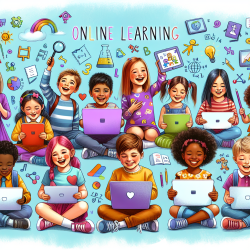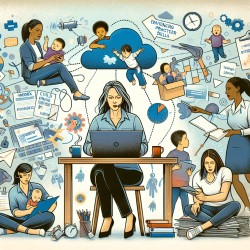Introduction
The COVID-19 pandemic has introduced a myriad of challenges, particularly in the realm of communication. As face masks and social distancing became the norm, these preventive measures have significantly impacted verbal and non-verbal communication. For practitioners, understanding these impacts is crucial for improving communication strategies, especially in educational and healthcare settings.
Understanding the Impact
The research article "Impact of SARS-CoV-2 Virus (COVID-19) Preventative Measures on Communication: A Scoping Review" offers a comprehensive look at how face coverings and distancing affect communication. The study categorized the impacts into three main areas: healthcare contexts, everyday life, and speech impacts due to face coverings.
- Healthcare Contexts: Personal protective equipment (PPE) disrupts speech communication and affects interpersonal relationships. Transparent masks, though less available, are preferred for their visual cues.
- Everyday Life: Masks hinder emotional recognition and social interaction, with significant effects on those with hearing loss.
- Speech Impacts: Masks attenuate sound frequencies, affecting speech understanding, especially in noisy environments.
Strategies for Practitioners
Given these findings, practitioners can adopt several strategies to mitigate communication barriers:
- Reduce Background Noise: Implement environmental modifications to minimize noise, enhancing speech understanding and reducing anxiety.
- Select Appropriate Masks: Use transparent masks when visual cues are critical, but opt for surgical or N95 masks for better acoustic performance when visual cues are less important.
- Use Remote Microphone Technology: In educational settings, this technology can improve speech understanding for those with hearing loss.
- Augmentative Communication Strategies: Encourage clear speech, use gestures, and write down key information to enhance understanding.
- Virtual Communication: Consider remote consultations with live subtitling to improve clarity and empathy in communication.
Encouraging Further Research
While current strategies provide a foundation, ongoing research is essential. Developing masks with better acoustic properties while maintaining visual transparency can further enhance communication. Additionally, exploring the impact of amplification on speech understanding in masked environments can offer new insights.
Conclusion
As the world continues to navigate the pandemic, understanding and addressing the communication challenges posed by preventive measures is vital. By implementing data-driven strategies and encouraging further research, practitioners can significantly improve communication outcomes for individuals, particularly those with hearing loss.
To read the original research paper, please follow this link: Impact of SARS-CoV-2 Virus (COVID-19) Preventative Measures on Communication: A Scoping Review.










